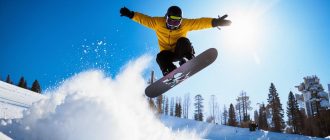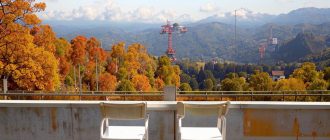A professional snowboarder and a master of sports in alpine skiing answer.
Nowadays there is quite a popular opinion: “To be a professional – you need to do one thing and not to be atomized by many others”. This is true, but only partially. For example, in such sports as snowboarding and alpine skiing, one skiing at a certain point will not be enough. That’s why many athletes try to set aside time to train off-slope or learn a new physical activity. This is necessary in order to master skiing skills to a greater extent and take themselves to the next level.
No matter how much you love the mountains, the process of skiing and your beautiful board or skis, one day your progress in skiing will stop. We decided to suggest a few options on how you can diversify your training on the slope, and most importantly, how to strengthen your body so that it is ready for unexpected loads.
professional snowboarder
Our bodies need to be ready for stress. It is impossible to achieve a good result just by riding. Every professional, regardless of the sport, spends a lot of time in the gym working on a certain muscle group.


Master of Sports in alpine skiing and instructor at Riders School
In addition to practicing on snow, you should be sure to develop your overall physical fitness. First of all, to be ready for the stresses on the slope. If an athlete gets tired in the middle of a run and cannot ride to the end of the course as intensively as at the beginning of the descent, the effectiveness of training on snow is reduced. For example, during the off-season you should focus entirely on general fitness training. During the winter season, strength and functional training should also be added to maintain the athlete’s quality fitness.

How does a rider benefit from regular training?
Rong: By training in the gym, we increase our endurance. Accordingly, we can cope with loads more easily, we can ride without overworking our body, and we minimize the possibility of injuries.
Andrei: You should be pumped up in all directions. Any kind of training will be beneficial. The main thing is to plan them correctly and not to forget about recovery between them. The most useful will be the development of strength endurance. One of the variants of its training: the athlete passes the track for 60-90 seconds and at the same time works at the limit of his capabilities. It can also be done in the gym. Try to simulate the conditions on the slope and build your training based on this simulation. You can be imaginative here. For example, take a barbell weighing 50% of your own weight and squat with a small amplitude at a fast pace. Do it for 60-90 seconds.

What should be emphasized?
Jun: Strong legs in our sports are the key to success. There are many exercises from the world of soccer or basketball that snowboarders have borrowed that are great for daily exercise. In general, don’t be afraid to experiment, you can always take something useful even from sports that, at first glance, have nothing to do with snowboarding or skiing.
Andrei: The emphasis should be on the quality that the athlete has a “limp”. If your strength indicators are fine, but you can’t maintain them for a long time, then you should focus on developing your endurance.

What can you do to diversify your training?
Jun: Stretching. I would not make this item supplemental at all, but core. Yoga is a modern cheat code, thanks to which your body will always be in perfect tone and you will be able to stay “in gear” longer while enjoying your favorite sport.
Andrei: It will be useful to diversify training with coordination and balance exercises. You can add acrobatics.






